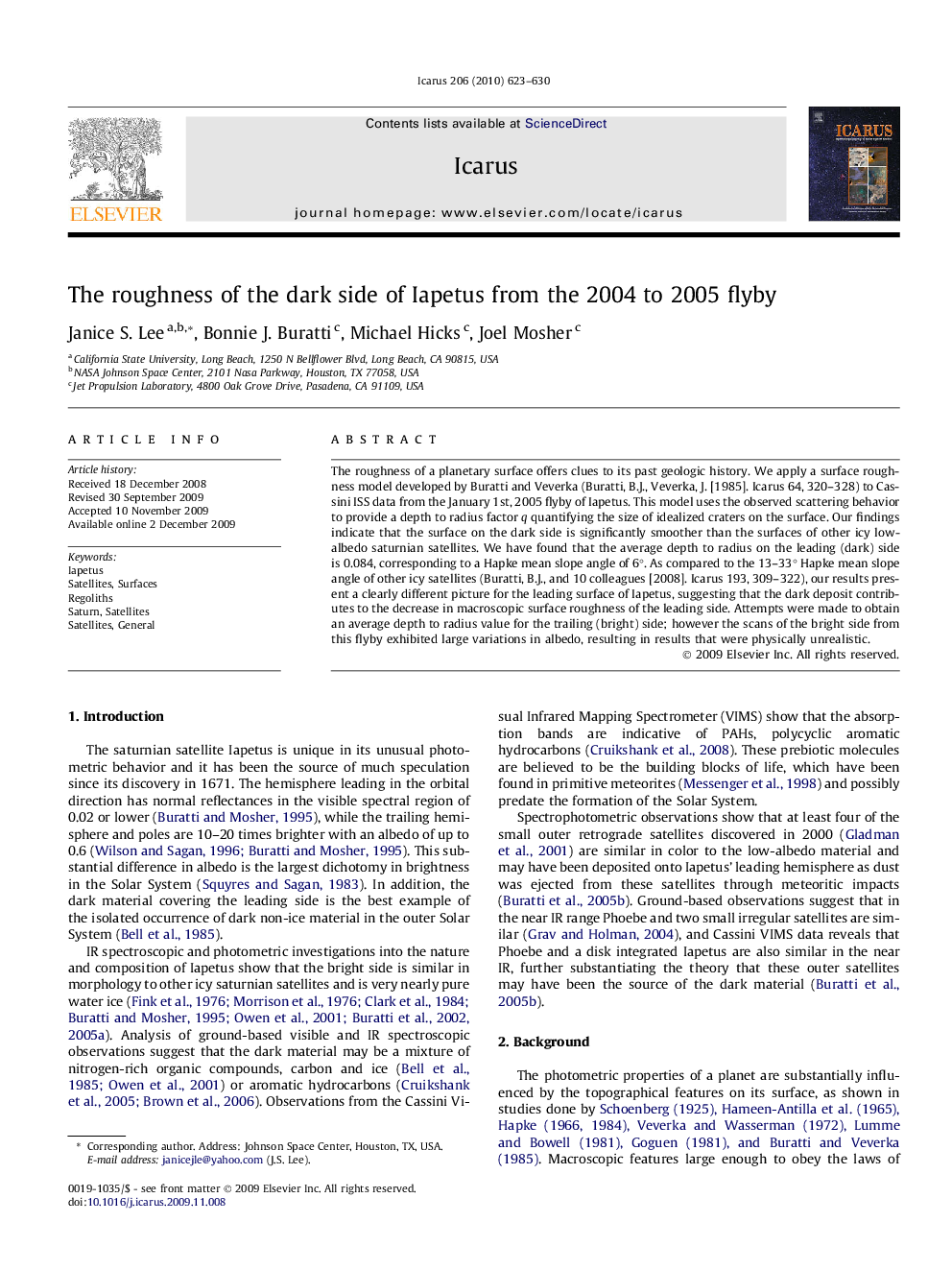| کد مقاله | کد نشریه | سال انتشار | مقاله انگلیسی | نسخه تمام متن |
|---|---|---|---|---|
| 1774386 | 1021163 | 2010 | 8 صفحه PDF | دانلود رایگان |

The roughness of a planetary surface offers clues to its past geologic history. We apply a surface roughness model developed by Buratti and Veverka (Buratti, B.J., Veverka, J. [1985]. Icarus 64, 320–328) to Cassini ISS data from the January 1st, 2005 flyby of Iapetus. This model uses the observed scattering behavior to provide a depth to radius factor q quantifying the size of idealized craters on the surface. Our findings indicate that the surface on the dark side is significantly smoother than the surfaces of other icy low-albedo saturnian satellites. We have found that the average depth to radius on the leading (dark) side is 0.084, corresponding to a Hapke mean slope angle of 6°. As compared to the 13–33° Hapke mean slope angle of other icy satellites (Buratti, B.J., and 10 colleagues [2008]. Icarus 193, 309–322), our results present a clearly different picture for the leading surface of Iapetus, suggesting that the dark deposit contributes to the decrease in macroscopic surface roughness of the leading side. Attempts were made to obtain an average depth to radius value for the trailing (bright) side; however the scans of the bright side from this flyby exhibited large variations in albedo, resulting in results that were physically unrealistic.
Journal: Icarus - Volume 206, Issue 2, April 2010, Pages 623–630